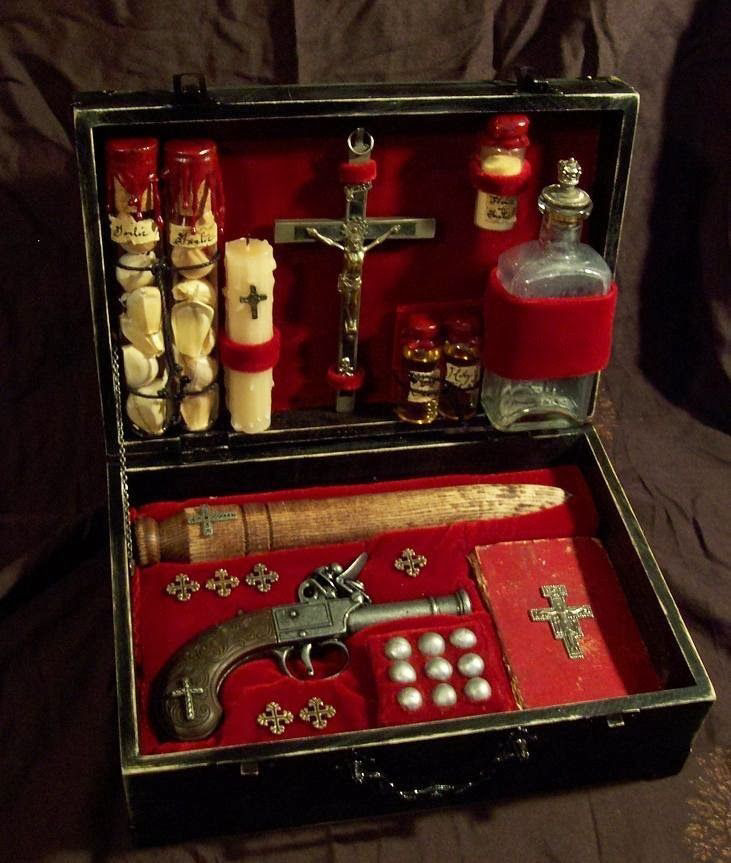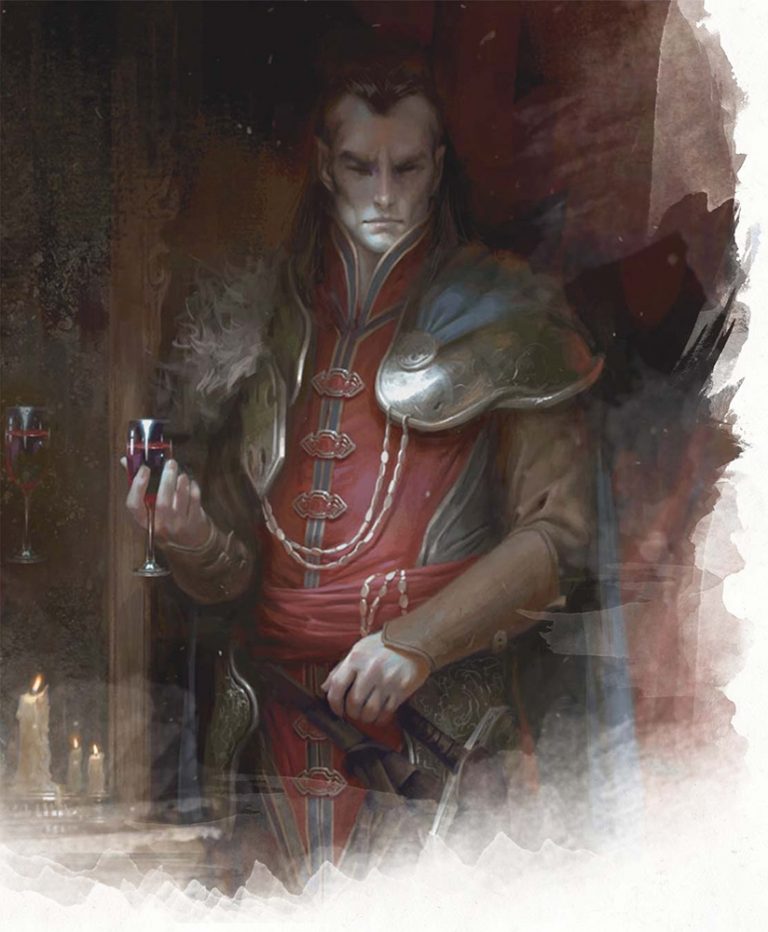If you are using Chrome, click the red hand button at the top right of the screen:

Then select: Don't run on pages on this site
If you do it correctly, the red hand will turn to green and you will no longer see this message.
Sometimes, like today, I have a crisis of faith in vampirism. I suppose it is something normal and something very healthy: I think it is good to doubt our beliefs, expose them to criticism, reflect on them, confront them with our lives... The opposite would be falling into a dogmatic cult.

And what are the roots of my existential crisis? I'm not sure but sometimes I get the feeling that vampirism is something artificial, without a natural basis beyond the aesthetics that the marketing of this subculture transmits to us through social networks. Deep down, I must admit that I have come to vampirism thanks to my love for Gothic literature (I emphasize the word literature) and not because I have a need to become a predator of blood or energy. (In fact, I get my energy - prana- in another way, and not by sucking it from other beings of dubious vibration).
But that is not all. I am very bothered by the superficiality of modern vampires, who have been inspired by Anne Rice's novels (novels that, by the way, I call "airport literature"), or commercial TV series. It seems that the life of a vampire, after being aware of his immortality, degenerates in the style of "the portrait of Dorian Gray" who, already fed up with all the pleasures of life, has nothing left but to dedicate himself only to partying and degeneration.
The only thing that, today, attracts me about vampirism is its desire for immortality... but even in that we are not original. Virtually all philosophies and spiritualities on the planet remember that living beings are immortal or, at least, their spiritual part is.
A warning before finishing: this personal state of existential crisis is neither permanent nor stable. It's simply what I feel right now and that may have changed tomorrow.
There are people who say it’s a fake, but I can tell you, I’ve seen it myself! It’s really incredible, the blood turns to liquid and goes a bright shade of red!

Pretty near from my house at Madrid, you can visit the Royal Monastery of La Encarnación. The walls are lined with glass cabinets containing hundreds upon hundreds of gold and silver reliquaries. The bone fragments of defunct saints are prettily packaged, so that even the skulls – displayed in glass boxes atop beds of colourful artificial flowers – look oddly attractive...
Well, the main draw amongst all this Catholic bling is a small glass ampule filled with a dark crusty substance. This is the magical coagulated blood of early Christian martyr Saint Pantaleon which, every year on 27 July, liquefies in front of crowds of the faithful. I went there with an American friend and I'm writting her words after the experience:
"As you can perhaps tell from my tone, I’m more than a little skeptical about this miracle, but I can’t resist an urban legend, which is why I lined up in the heat a week before 27 July for the official tour. And I’m not sorry I did. The convent is a fascinating building in its own right, one of Madrid’s oldest, built between 1611 and 1616, and still home to a closed order of nuns who live right in the heart of central Madrid. To this day they have little contact with the outside world and guests are only allowed in on well-supervised tours. Needless to say, photos are strictly forbidden.
The nuns got their mitts on the ampule after it was given to the Spanish king in 1611 by Pope Paul V. Supposedly, it’s the genuine blood of Saint Panteleon, a doctor who served the Roman emperor himself before being converted to Christianity. As as a result, he not only lost his job, but his head in 305 AD. Some prescient early Christians were conveniently around at that point to scoop up samples of his blood for future veneration. How this blood survived through the ages to wind up in Rome is, like many details of the saint’s life, incredibly fuzzy.
After visiting the convent and hearing the testimony of the guide, I read up on theories about how this miracle is achieved and was surprised to note that most skeptics bend over backwards to find an explanation that doesn’t point an accusing finger at the nuns themselves – despite the rise of secularism, nuns in Spain are still considered to be beyond reproach. This leaves us with a “scientific explanation” that is downright bizarre. Namely that the blood has been mixed with whale sperm which, when heated or agitated, turns to liquid. Bearing in mind that the convent was built with thick stone walls that pretty effectively insulate the place from the burning July heat and that the blood liquefies each year exactly on the date of the saint’s birthday, I for one am not buying it.
The relic at La Encarnación is not the only sample of Saint Pantaleon’s blood, another is located in Ravello in Naples, Italy. This is also said to liquefy on the saint’s feast day further bolstering the claims that this is a genuine miracle. Other “proof” of its authenticity is that the Inquisition thoroughly looked into the matter in the 18th century and declared the miracle to be genuine. Hmm, so the church investigated itself and didn’t find any evidence of tampering, how very convenient!
My personal opinion is that until the Catholic Church actually allows proper scientists access to test the contents of the ampule and observe the bloody (pun intended) thing up close before and during the miracle, it’s perfectly reasonable to cry fake! Still, this won’t deter the thousands of visitors who are due to rock up to the convent to see the ampule on display this coming Friday".
If you’re interested in taking a look at the convent, guided tours take place twice a day at 10am and 4pm. The tour is in Spanish, but if you’re up to it, it’s really informative and entertaining. Entry is 6 euro, but for members of the EU and citizens of Latin American countries, it’s free of charge on Wednesdays and Thursdays.
Holy water is water that has been blessed by a member of the clergy or a religious figure, or derived from a well or spring considered holy. The use for cleansing prior to a baptism and spiritual cleansing is common in several religions, from Christianity to Sikhism. The use of holy water as a sacramental for protection against evil is common among Lutherans, Anglicans, Roman Catholics and Eastern Christians.

Sprinkling with holy water is used as a sacramental that recalls baptism. In the West the blessing of the water is traditionally accompanied by exorcism and by the addition of exorcised and blessed salt.
Holy water is kept in the holy water font, which is typically located at the entrance to the church (or sometimes in a separate room or building called a baptistery). Smaller vessels, called stoups, are usually placed at the entrances of the church, to enable people to bless themselves with it on entering.
In the Middle Ages Christians esteemed the power of holy water so highly that in some places fonts had locked covers to prevent the theft of holy water for unauthorized magic practices. The Constitutions of Archbishop Edmund Rich prescribe that: "Fonts are to be kept under lock and key, because of witchcraft (sortilege). Similarly the chrism and sacred oil are kept locked up."
Saint Teresa of Avila (1515-1582), a Doctor of the Church who reported visions of Jesus and Mary, believed fervently in the power of holy water and stated that she used it with success to repel evil and temptations. She wrote:
"I know by frequent experience that there is nothing which puts the devils to flight like Holy water".
The 20th-century nun and mystic Saint Faustina in her diary (paragraph 601) said she once sprinkled a dying sister with holy water to drive away demons.
The new Rituale Romanum excludes the exorcism prayer on the water. Exorcised and blessed salt has traditionally been added to the holy water as well. Priests can continue to use the older form if they wish as confirmed by Pope Benedict XVI in Summorum Pontificum, which states "What earlier generations held as sacred, remains sacred and great for us too".
The traditional Latin formula for blessing the water is as follows:
"Exorcizo te, creatura aquæ, in nomine Dei Patris omnipotentis, et in nomine Jesu Christi, Filii ejus Domini nostri, et in virtute Spiritus Sancti: ut fias aqua exorcizata ad effugandam omnem potestatem inimici, et ipsum inimicum eradicare et explantare valeas cum angelis suis apostaticis, per virtutem ejusdem Domini nostri Jesu Christi: qui venturus est judicare vivos et mortuos et sæculum per ignem. Deus, qui ad salutem humani generis maxima quæque sacramenta in aquarum substantia condidisti: adesto propitius invocationibus nostris, et elemento huic, multimodis purificationibus præparato, virtutem tuæ benedictionis infunde; ut creatura tua, mysteriis tuis serviens, ad abigendos dæmones morbosque pellendos divinæ gratiæ sumat effectum; ut quidquid in domibus vel in locis fidelium hæc unda resperserit careat omni immunditia, liberetur a noxa. Non illic resideat spiritus pestilens, non aura corrumpens: discedant omnes insidiæ latentis inimici; et si quid est quod aut incolumitati habitantium invidet aut quieti, aspersione hujus aquæ effugiat: ut salubritas, per invocationem sancti tui nominis expetita, ab omnibus sit impugnationibus defensa. Per Dominum, amen".
Well, believe me when I tell you that I have not been able to investigate the reason for the origin of the myth of holy water, in relation to vampires, beyond their identification with demons. (Which is not true, since demons were angels who revealed themselves, while vampires were humans transformed into undead).
I'm writing this question down to continue researching it.
For personal and veiled reasons, I have been blinded in my Coven. I am taking advantage of this experience of silence to dedicate myself to reflection, meditation and inner growth. I like to draw positive lessons from life even in adverse situations.

I must say that, although I am not a very participatory vampyre in my coven (which, by the way, is due to the language barrier - my mother tongue is Spanish from Spain -), however, I realize the emotional, affective and energetic dependence that I have towards my Coven.
It's funny, but in life, habit becomes custom and custom becomes a way of life. For a long time, I had be used to, in the mornings, enter at VR site and, first of all, entering my Coven, say hello by leaving an "I'm here" message and then honor the most active members of my Coven . Maybe that's not important, but it gave me a certain feeling of "family customs."
I don't want this message to seem pathetic. I am not complaining nor I have an offended feeling. On the contrary, my loyalty to my Coven Master remains intact, as well as to my Coven brothers and sisters.
With this message, I just want to express that the system designed in VR for the Covens is really wise because, through this experience, I am realizing that a simple fact like "being blind in a coven" can be converted, thanks to reflection and internalization, in a motive of personal growth.
That's what I wanted to share. Have a nice day.
After reading abundant writings about the nature of the vampire and even about vampire anthropology, I have realized that there is a very important being in the vampire world that has hardly been studied: the donor.
The chronicles tell that centuries after the creation of the first vampire, and specifically towards the historical period of the Middle Ages, many vampires realized that they could optimize their resources if, instead of going out to hunt every night, they had a donor or a harem of donors. This is because in the Middle Ages many vampires, as well as many humans, were engaged in warfare on the various fronts that were open (wars against the Turks, against the Austrian Empire, against the Hungarians, etc.). Thus, sometimes, having a donor required less effort and, in any case, could supplement the periods when human hunting was not abundant.

Of course, donors increased during the 19th and 20th centuries and, arguably, have become more widespread in the 21st century. Nowadays, vampires are subject to human laws and, with rare exceptions, we do not go out hunting at night. Therefore, to survive, or simply to keep us energized, we turn to a donor, either energy or blood.
The nature of the donor is curious. It is a human (or a pre-vampire) who voluntarily gives his energy (or exceptionally some of his blood) to a vampire. Many donors claim to have a submissive nature (also in sex) and willingly make themselves available to the vampire not only to feed him but to attend to his needs. The donor may come to feel a genuine love for the vampire he or she serves.
Some donors are transformed into vampires after some time serving the vampire. This happens as a reward for their services or simply by the vampire's decision. In this case, the vampire-donor usually remains loyal to his Vampire-dominant for a lifetime, serving him even in the services he may need, even without obligation. I think a coven works well when there is a certain number of these faithful vampires willing to serve the Coven Master.
COMMENTS
-
Kirill555
11:11 Sep 18 2023
I feel you and I agree many times it's good to stop and reflect for a moment.
UnfilteredPoison
17:25 Sep 18 2023
Thank you for sharing. You are not alone in feeling this way. To me it is about the celebration of life and being fully alive in my eyes. Living life to it's fullest. Enjoying living in the moment but yes what would one be as a student if they did not ever doubt and ask questions how does one ever learn if they never question or seek further and deeper than what they are told to.
vormel
19:30 Sep 18 2023
Great words, thank you!!